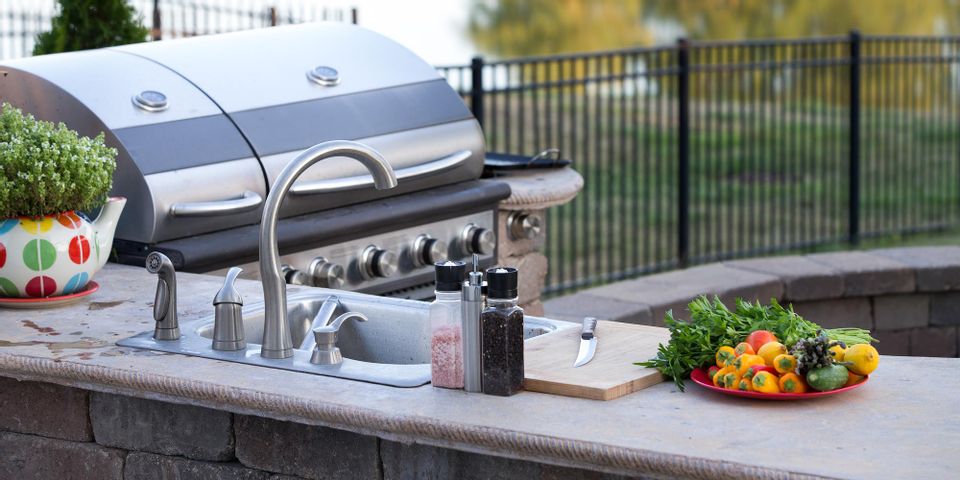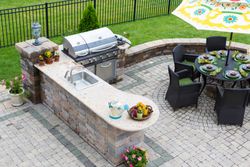
Outdoor kitchens are quickly becoming a popular home improvement project due to the rising trend of expanding living spaces. They are also the perfect spot for entertaining guests and hosting parties. If you’re thinking of constructing one, consider residential plumbing, your style, and the climate. Below, find aspects to help you design an outdoor kitchen that suits your needs.
How to Plan Your Outdoor Kitchen
1. Make It Weatherproof
Compared to its indoor counterpart, an outdoor kitchen is more exposed to the elements and harsh weather. Consider these factors when designing its layout and choosing which materials to use on the cabinets and countertops. For instance, wooden cabinetry may look stylish but won’t stand up to weathering as well as hardier materials. Select materials that are highly durable but easy to maintain, such as steel, concrete, and natural stone. Consult with a residential plumbing contractor about which kitchen appliances will withstand your climate best.
As for the floors, hardwood is also out of the question. Stick to floors that are resistant to spills, kitchen grease, and rain. Provide enough traction with a partially rough surface like patterned tiles. Skip the marble and slate as they are slick and dangerous when wet.
Choose a spot that won’t be too windy, cold, or hot since you don’t want to cook somewhere that’s uncomfortable for you and your guests. Make sure to keep your outdoor kitchen covered under an overhang for protection against strong winds, torrential rain, and heavy snow.
2. Consider the Features
 When planning the layout of your outdoor kitchen, know how you want to use it first. Are you planning to turn it into a fully-functional area or something simple? Once you’ve figured that out, make a list of features and appliances to buy. Include the basics like the stovetop and refrigerator, but hold back on other extravagant appliances like a wine cooler and a brick oven. You can always add appliances when you settle into the area.
When planning the layout of your outdoor kitchen, know how you want to use it first. Are you planning to turn it into a fully-functional area or something simple? Once you’ve figured that out, make a list of features and appliances to buy. Include the basics like the stovetop and refrigerator, but hold back on other extravagant appliances like a wine cooler and a brick oven. You can always add appliances when you settle into the area.
If you’d rather do the food preparation outside, install an L-shaped countertop to house the sink, cabinets, and work area. Don’t forget to have sufficient lighting in your outdoor kitchen and dining area, not only for ambiance but for practicality.
3. Figure Out the Utilities You Need
Even if you plan on doing a lot of the work inside, it’s still essential to have a working sink outside for emergency washing. You should make sure that you have water and gas lines set up in your outdoor kitchen, and have a residential plumbing expert work on them. Gas-powered grills, stoves, and ranges require professional installation to ensure safety and functionality. The same goes for electrical appliances. Always discuss your appliance plans with a licensed electrician to see if your vision is feasible.
When building your outdoor kitchen, consult the residential plumbing experts at Pro-Fetick Plumbing. As a trusted plumbing contractor in Lexington, KY, they have offered a range of services to residents and business owners in and around the area, including pipelining, sewer cleaning, and installing kitchen appliances. Call (859) 263-5727 or visit their website to learn more about their residential plumbing services.
About the Business
Have a question? Ask the experts!
Send your question

